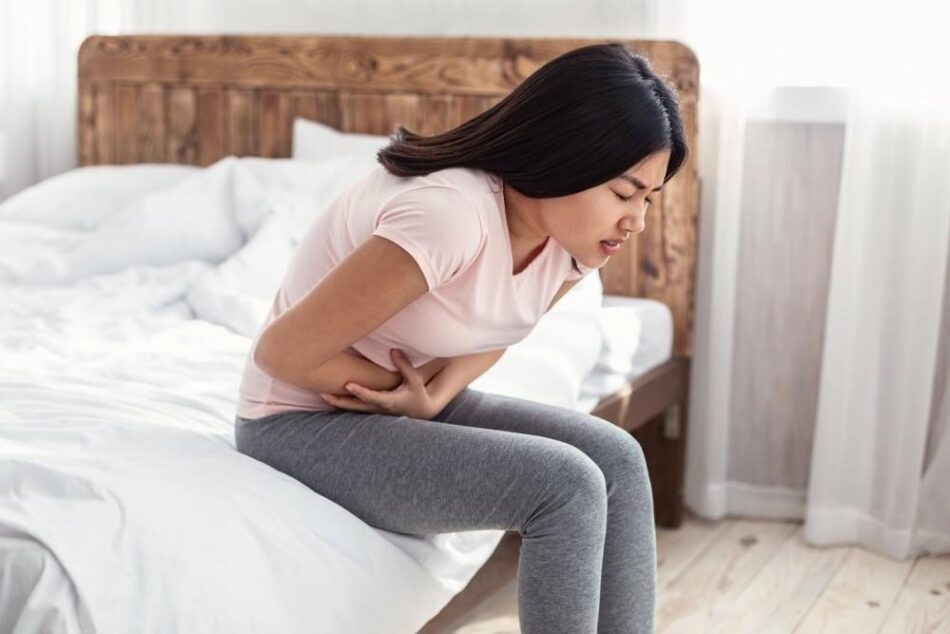Period cramps, or dysmenorrhea, are a common concern for many women, ranging from mild discomfort to debilitating pain. Understanding the causes of these cramps can help you find effective solutions and improve your quality of life. Below, we explore the 10 most common causes of severe period cramps and offer actionable tips to address them.
1. Hormonal Imbalance
Hormonal fluctuations, particularly in estrogen and progesterone levels, can exacerbate period cramps. An overproduction of prostaglandins, which help the uterus contract, often leads to more severe pain.
How to Address It:
- Consider hormonal treatments like birth control pills, under a doctor’s guidance.
- Incorporate omega-3-rich foods, which can help regulate prostaglandin production.
2. Endometriosis
Endometriosis occurs when tissue similar to the uterine lining grows outside the uterus, leading to inflammation and intense cramps during menstruation.
How to Address It:
- Consult a gynecologist for a proper diagnosis and treatment plan.
- Pain management options include NSAIDs or hormonal therapy.
3. Uterine Fibroids
Non-cancerous growths in the uterus, known as fibroids, can lead to heavy bleeding and severe cramps during your period.
How to Address It:
- Seek medical advice for imaging tests to detect fibroids.
- Treatment may involve medications, minimally invasive procedures, or surgery.
4. Pelvic Inflammatory Disease (PID)
PID is an infection of the reproductive organs caused by bacteria. It can lead to chronic pelvic pain, including severe cramps during menstruation.
How to Address It:
- Antibiotics prescribed by a healthcare provider are necessary.
- Practice safe sex to prevent PID-related infections.
5. Adenomyosis
This condition occurs when the uterine lining grows into the uterine wall, causing heavy periods and intense cramps.
How to Address It:
- Over-the-counter pain relief and hormonal treatments can alleviate symptoms.
- In severe cases, surgical options such as endometrial ablation or hysterectomy may be recommended.
6. Stress
High levels of stress can disrupt hormonal balance, leading to irregular and more painful periods.
How to Address It:
- Practice stress-reduction techniques such as meditation, yoga, or deep breathing exercises.
- Maintain a healthy work-life balance to keep cortisol levels in check.
7. Lack of Exercise
A sedentary lifestyle can contribute to poor blood circulation, worsening period cramps.
How to Address It:
- Engage in light to moderate physical activity, such as walking, swimming, or yoga.
- Regular exercise can also release endorphins, which act as natural painkillers.
8. Poor Diet
Consuming excessive caffeine, sugar, or processed foods can worsen inflammation and intensify cramps.
How to Address It:
- Opt for anti-inflammatory foods like leafy greens, berries, nuts, and fish.
- Reduce your intake of caffeine and sugary snacks during your menstrual cycle.
9. Dehydration
Not drinking enough water can lead to muscle cramps, including in the uterus, intensifying period pain.
How to Address It:
- Aim to drink at least 8-10 glasses of water daily.
- Include hydrating foods such as cucumbers, watermelon, and oranges in your diet.
10. Polycystic Ovary Syndrome (PCOS)
PCOS is a hormonal disorder that can cause irregular periods and more severe cramps.
How to Address It:
- Work with your doctor to manage symptoms with a tailored treatment plan.
- Lifestyle changes, such as weight management and a balanced diet, can improve symptoms.
When to See a Doctor
While occasional period cramps are normal, severe or persistent pain should not be ignored. Consult a healthcare professional if:
- Over-the-counter pain relief isn’t effective.
- You experience heavy bleeding or irregular periods.
- Symptoms interfere with your daily life.
Final Thoughts
Period cramps can range from mild discomfort to a serious health issue, depending on their underlying cause. By identifying what triggers your cramps and addressing those root causes, you can reduce the severity of your pain and enjoy a better quality of life. Remember, always consult a healthcare provider for accurate diagnosis and treatment options.
By following these steps, you can manage period cramps effectively and focus on the activities you love—pain-free!





